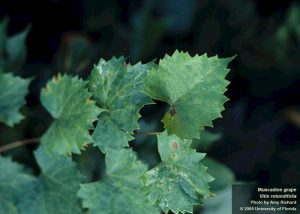Mistaken Identities
Look closely at the landscape. Creeping, crawling, and climbing slowly among our landscapes and natural areas lie plants of mistaken identities. Growing amongst our plants and trees, we may see vines. Vines grow along the ground or into the canopies of our trees. Left with minimal control, these vines continue to grow, continue to reach along the ground into the canopy. These vines are commonly condemned with the term “invasive.” Many of our vines throughout Nassau County are native plant species, providing critical food and habitat for wildlife but suffer from mistaken identity: invasive.
Florida’s natural areas consist of dozens of native vining plants that provide food, shelter, a place for reproduction, and/or nectar, for hundreds of species of wildlife throughout Florida. While writing this article, I can easily think of 18 native vine species we can find throughout Nassau County. The most common native vines residents reach out to the county extension office include Muscadine Grape (Vitis rotundifolia), Virginia Creeper (Parthenocissus quinquefolia), Trumpet Vine (Campis radicans), and Greenbriar (Smilax spp).


The “Vines of Mistaken Identity” blog series will explore how to identify our common native plants commonly mistaken as invasive.
Is it invasive?
We do have invasive vine species in Nassau County, too, which includes plants like Air Potato (Dioscorea bulbifera), Cat’s Claw (Dolichandra unguis-cati), Skunk Vine (Paederia foetida), Old World Climbing Fern (Lygodium microphyllum), and Kudzu (Pueraria montana). Invasive plants provide no benefit to wildlife, often displacing and outcompeting native plant material and wildlife, which has a significant environmental and economic impact on Floridians.
Many county residents regularly communicate with UF/IFAS Extension Nassau County regarding “invasive vines” growing within canopies of trees. The majority of the time, the vines concerning residents are native plant species. Many of the concerns relate to vines having a long-term impact on the health of the plants. It may seem alarming when seeing some of our plants and trees covered in vines. If they are our native vines, then there should be no concern because there is no such thing as a “native invasive.”
Our native vining species may seem unruly, but they have limited to no impact on our plant material – especially within our natural areas. Within maintained landscapes, a vine can overwhelm some of our shrubs if left unchecked. While vines grow within their native habitats, we know there are no long-term impacts on plant material. Even as our native vines seemingly engulf the canopies of trees, at most, a tree may have a minor reduction of photosynthetic capabilities – but it won’t have a long-term impact on the tree’s health.
Controlling Vines
We have many native vine species suffering from mistaken identities – but that does not mean we cannot control our native vine species. Eradication of our native vines is a very bad idea, but control is possible. Rather, for homeowners and property managers, we can easily cut vines at their base and allow them to grow again from the ground. This will help provide the habitat required for our native plant species without the concern of fire ladders forming within the landscape. Or, appropriately labeled herbicides can be applied to the cut vine to manage the roots and tubers within the soil. Nonetheless, multiple treatments may be needed for full control.
Our native vining plants may seem like a nuisance, or receive the mistaken identity of “invasive,” but it is important to note that our native vining plants are critical to wildlife, especially within our fragmenting landscapes. Understanding their value provides us an opportunity to keep them within landscapes.
For more information on Vine Control, visit UF/IFAS Extension’s Gardening Solution Webpage.
For More Information
Follow the Vines of Mistaken Identity Blog Series
Upcoming Horticulture Programs
 0
0
